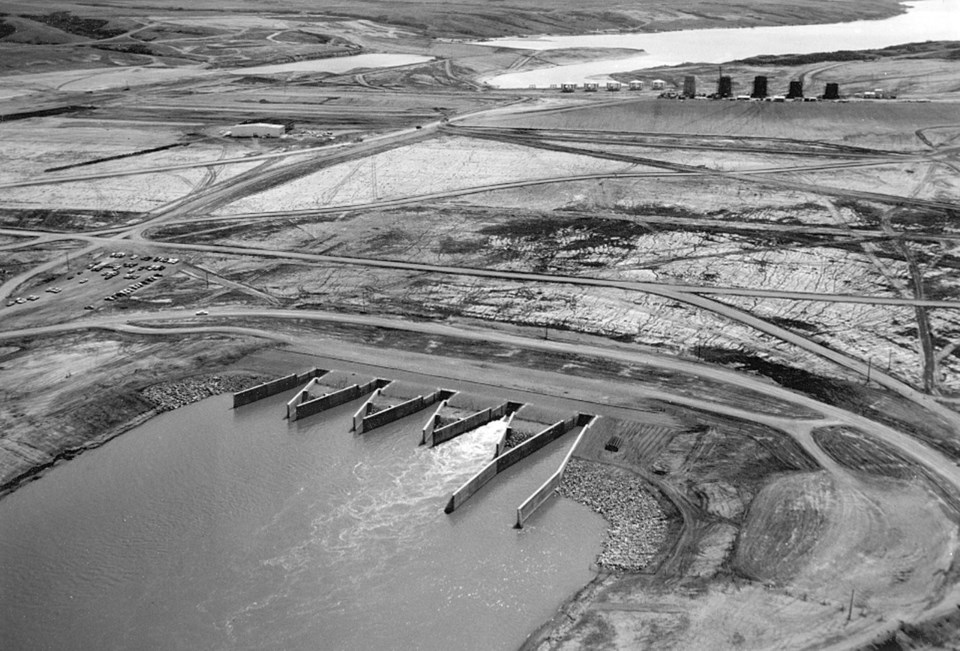Energy piped along power lines draped across prairie fields sent farm house radios buzzing, refrigerators humming and washing machines rumbling. Light bulbs replaced gas lamps that were prone to tipping over and causing barn fires. The days seemed to grow longer with electric light and appliances.
When it was built in 1969, the Coteau Creek Hydroelectric Station was the latest piece of a mammoth effort to help bring reliable power to every corner of the province.
More than 50 years later, Saskatchewan is spending $71 million to modernize it.
In a news release, Howard Matthews, vice president of Power Production at SaskPower, said "maintaining hydroelectric generation is a key part" of cutting its greenhouse gas emissions by at least 50 per cent from 2005 levels by 2030.
“Investing in Coteau Creak shows SaskPower’s commitment to providing clean, reliable power to the people of Saskatchewan,” he said.
Located near Elbow and the 小蓝视频 Saskatchewan River, the plant draws water from the Gardiner Dam and produces 186 megawatts split between three turbines, according to SaskPower
Only two decades separated the station's construction from the Saskatchewan government's early massive push to electrify rural areas.
Brownouts and blackouts were common in those years. When residents drove home, flicked the lights on and fired up their stoves at the end of the day, that created power surges the grid could hardly accommodate, Saskatchewan historian Merle Massie said.
They were so bad that they even affected the University's research, she added.
"It really became more and more clear that we had to fix the grid," she said.
Whether it was supply or demand that drove the boom of infrastructure spending in the 1960s is a "the chicken or the egg" conundrum, she said.
Regardless, it ultimately created the conditions for the province to boost its energy capacity.
Massie calls Gardiner the "dam the drought built." The province built it first to create a lake and second to supply a water source for Saskatoon, Regina and Moose Jaw. Power generation was a distant third, she said.
"One of the reasons why they're putting money into it now is because it wasn't really intended as a primary power generator. But now with the pulls on the grid, we need to upgrade it and expand its ability to create power."
The power station nonetheless soon stole headlines when construction started in the '60s. The attention paid to its production capacity reflects the importance placed on energy as more people had gained access to power, said University of Alberta Professor Shannon Stunden Bower, who studies western Canadian environment history.
"What at one time would have been unimaginable luxuries were becoming household conveniences that were very familiar to everyone."
Massie and Stunden Bower see a few elements worth revisiting in the historic lead-up to its construction. One is the destruction of Mistusinne, meaning "big stone. In 1966, the sacred site for Plains Cree and other First Nations on the prairies was blown up with dynamite when it became clear the creation of Lake Diefenbaker would flood and submerge the area.
"We're living in a moment where across society at large, we recognize the need to take account of harms perpetrated in the past. We need to work toward something like reconciliation," Stunden Bower said.
She and Massie also point to concerns expressed by residents of Cumberland House and the Saskatchewan River Delta about the construction of the dams and their impacts further along the river.
Those concerns were far out of mind in 1967, when roughly 75 impressed reporters toured the Coteau Creek facility and saw three large water turbines under construction, according to a Regina Leader-Post story at the time.
Saskatchewan, once slow to electrify, was booming. Power consumption was 660 million kilowatt-hours in 1957; by 1966 it was 2.918 billion. Those three turbines promised to deliver about 800 million kilowatt-hours by the time they were built, the article said.
When the first turbine came online in 1968, the StarPhoenix reported it would produce 12 per cent of the province's energy demands at a price tag of $40 million. The newspapers made little mention of the impacts residents would feel elsewhere in the province.
Today, the millions spent on system repairs could also prompt reflection on the history behind those turbines.
"I think it's a missed opportunity if these moments are not seen as invitations to revisit the circumstances in which these projects were created," Stunden Bower said.




